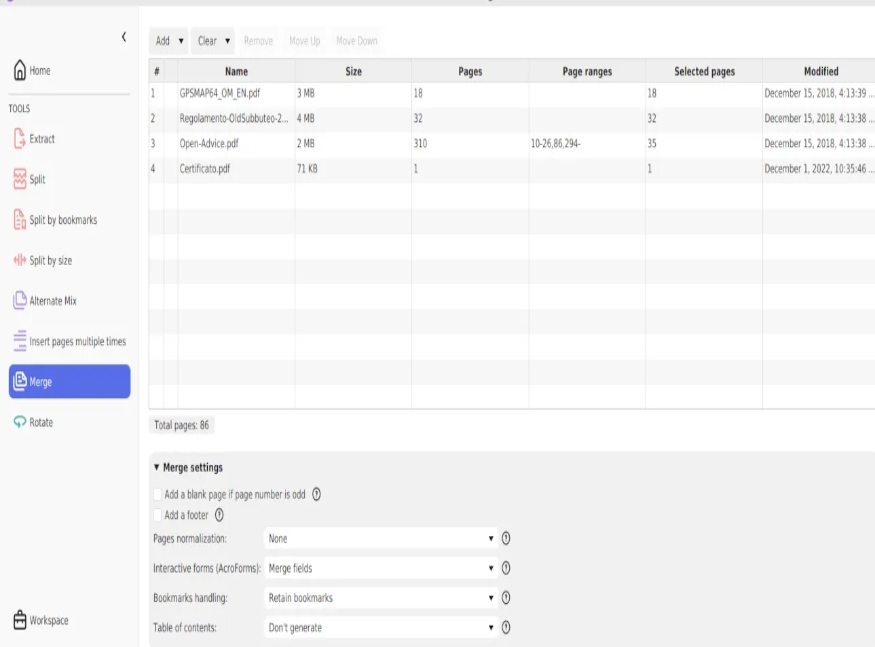
华为OD机试 2024E卷题库疯狂收录中,刷题点这里
专栏导读
本专栏收录于《华为OD机试真题(Python/JS/C/C++)》。
刷的越多,抽中的概率越大,私信哪吒,备注华为OD,加入华为OD刷题交流群,每一题都有详细的答题思路、详细的代码注释、3个测试用例、为什么这道题采用XX算法、XX算法的适用场景,发现新题目,随时更新,全天CSDN在线答疑。
一、题目描述
误码率 是最常用的数据通信传输质量指标。它可以理解为“在多少位数据中出现一位差错”。
移动通信 网络中的误码率主要是指比特误码率,其计算公式如下:比特误码率 = 错误比特数 / 传输总比特数,为了简单,我们引入字符串来表示误码通信的信息,一个字符错误了,就认为出现了一个误码。
输入一个标准的字符串,和一个传输前的字符串,计算误码率。
字符串会被压缩,例如:“2A3B4D5X1Z"表示”AABBBBDDDDXXXXXZ”
用例保证两个输入字符串解压后后长度一致,解压前后的长度不一定一致。
每个生成后的字符串长度 < 1000000。
二、输入描述
两行,分别为两种字符串的压缩形式。
每行字符串(压缩后的)长度 < 1000000。
三、输出描述
一行,错误的字母数量 / 展开后的总长度
备注
注意:展开后的字符串不会为数字。
四、测试用例
测试用例1:
1、输入
3A3B 2A4B
2、输出
1/6
3、说明
第一个字符串 “3A3B” 解压为 “AAABBB”。
第二个字符串 “2A4B” 解压为 “AABBBB”。
两个解压后的字符串逐一比较,共有 6 个字符。
发现 1 个位置的字符不同(第 3 个字符),误码数为 1。
误码率 = 错误的字符数量 / 总字符长度 = 1 / 6。
测试用例2:
1、输入
5Y5Z 5Y5Z
2、输出
0/10
3、说明
两个压缩字符串 “5Y5Z” 解压后都为 “YYYYYZZZZZ”。
两个解压后的字符串完全相同,没有错误字符。
误码率 = 0 / 10,所以输出 0/10。
五、解题思路
1、题目理解
题目给出两个经过压缩编码的字符串,通过解压缩后需要判断两个字符串在解压后的误码率,即对应位置不同的字符数量占总字符数量的比例。
输入的字符串是压缩形式,例如 “2A3B” 表示 “AABBB”。我们需要将这两个压缩字符串解压成实际的字符序列,然后逐位比较它们,统计误码(不同字符)的数量。
2、具体步骤:
- 解压缩字符串:
- 将压缩的字符串解压成实际的字符串序列。
- 压缩字符串的格式为:数字+字母的组合,表示字母重复的次数,例如 “3A4B” 解压后为 “AAABBBB”。
- 由于数字可能是多位的,例如 “12A” 表示 “AAAAAAAAAAAA”,所以需要处理多位数字。
- 比较两个解压后的字符串:
- 比较解压后的两个字符串,统计它们在每个位置上的不同字符数(误码)。
- 计算误码率:
- 误码率的公式为:错误的字符数量 / 解压后的总长度。
六、Python算法源码
def decompress(compressed):
# 解压缩字符串
expanded = []
i = 0
n = len(compressed)
while i < n:
num = 0
# 解析数字部分,可能有多位数字
while i < n and compressed[i].isdigit():
num = num * 10 + int(compressed[i])
i += 1
# 当前字符是要重复的字符
if i < n:
ch = compressed[i]
# 重复添加字符
expanded.append(ch * num)
i += 1
return ''.join(expanded)
def main():
# 读取输入
compressed1 = input().strip()
compressed2 = input().strip()
# 解压两个字符串
expanded1 = decompress(compressed1)
expanded2 = decompress(compressed2)
# 计算误码数量
error_count = 0
total_length = len(expanded1) # 根据题目,长度相同
for i in range(total_length):
if expanded1[i] != expanded2[i]:
error_count += 1
# 输出结果
print(f"{error_count}/{total_length}")
if __name__ == "__main__":
main()
七、JavaScript算法源码
function decompress(compressed) {
// 解压缩字符串
let expanded = [];
let i = 0;
let n = compressed.length;
while (i < n) {
let num = 0;
// 解析数字部分,可能有多位数字
while (i < n && !isNaN(compressed[i])) {
num = num * 10 + parseInt(compressed[i], 10);
i++;
}
// 当前字符是要重复的字符
if (i < n) {
let ch = compressed[i];
// 重复添加字符
for (let j = 0; j < num; j++) {
expanded.push(ch);
}
i++;
}
}
return expanded.join('');
}
function main() {
const fs = require('fs');
const input = fs.readFileSync('/dev/stdin', 'utf8').trim().split('\n');
// 读取输入
let compressed1 = input[0].trim();
let compressed2 = input[1].trim();
// 解压两个字符串
let expanded1 = decompress(compressed1);
let expanded2 = decompress(compressed2);
// 计算误码数量
let errorCount = 0;
let totalLength = expanded1.length; // 根据题目,长度相同
for (let i = 0; i < totalLength; i++) {
if (expanded1[i] !== expanded2[i]) {
errorCount++;
}
}
// 输出结果
console.log(`${errorCount}/${totalLength}`);
}
main();
八、C算法源码
#include <stdio.h>
#include <stdlib.h>
#include <string.h>
char* decompress(const char* compressed) {
// 预估解压后字符串的长度
char* expanded = malloc(1000000 * sizeof(char));
int index = 0;
int n = strlen(compressed);
int i = 0;
while (i < n) {
int num = 0;
// 解析数字部分,可能有多位数字
while (i < n && compressed[i] >= '0' && compressed[i] <= '9') {
num = num * 10 + (compressed[i] - '0');
i++;
}
// 当前字符是要重复的字符
if (i < n) {
char ch = compressed[i];
// 重复添加字符
for (int j = 0; j < num; j++) {
expanded[index++] = ch;
}
i++;
}
}
expanded[index] = '\0';
return expanded;
}
int main() {
char compressed1[1000000];
char compressed2[1000000];
// 读取输入
scanf("%s", compressed1);
scanf("%s", compressed2);
// 解压两个字符串
char* expanded1 = decompress(compressed1);
char* expanded2 = decompress(compressed2);
// 计算误码数量
int errorCount = 0;
int totalLength = strlen(expanded1); // 根据题目,长度相同
for (int i = 0; i < totalLength; i++) {
if (expanded1[i] != expanded2[i]) {
errorCount++;
}
}
// 输出结果
printf("%d/%d\n", errorCount, totalLength);
// 释放内存
free(expanded1);
free(expanded2);
return 0;
}
九、C++算法源码
#include <iostream>
#include <string>
using namespace std;
string decompress(const string& compressed) {
string expanded;
int n = compressed.length();
int i = 0;
while (i < n) {
int num = 0;
// 解析数字部分,可能有多位数字
while (i < n && isdigit(compressed[i])) {
num = num * 10 + (compressed[i] - '0');
i++;
}
// 当前字符是要重复的字符
if (i < n) {
char ch = compressed[i];
// 重复添加字符
expanded.append(num, ch);
i++;
}
}
return expanded;
}
int main() {
string compressed1, compressed2;
// 读取输入
cin >> compressed1 >> compressed2;
// 解压两个字符串
string expanded1 = decompress(compressed1);
string expanded2 = decompress(compressed2);
// 计算误码数量
int errorCount = 0;
int totalLength = expanded1.length(); // 根据题目,长度相同
for (int i = 0; i < totalLength; i++) {
if (expanded1[i] != expanded2[i]) {
errorCount++;
}
}
// 输出结果
cout << errorCount << "/" << totalLength << endl;
return 0;
}
🏆下一篇:华为OD机试真题 - 简易内存池(Python/JS/C/C++ 2024 E卷 200分)
🏆本文收录于,华为OD机试真题(Python/JS/C/C++)
刷的越多,抽中的概率越大,私信哪吒,备注华为OD,加入华为OD刷题交流群,每一题都有详细的答题思路、详细的代码注释、3个测试用例、为什么这道题采用XX算法、XX算法的适用场景,发现新题目,随时更新,全天CSDN在线答疑。




















